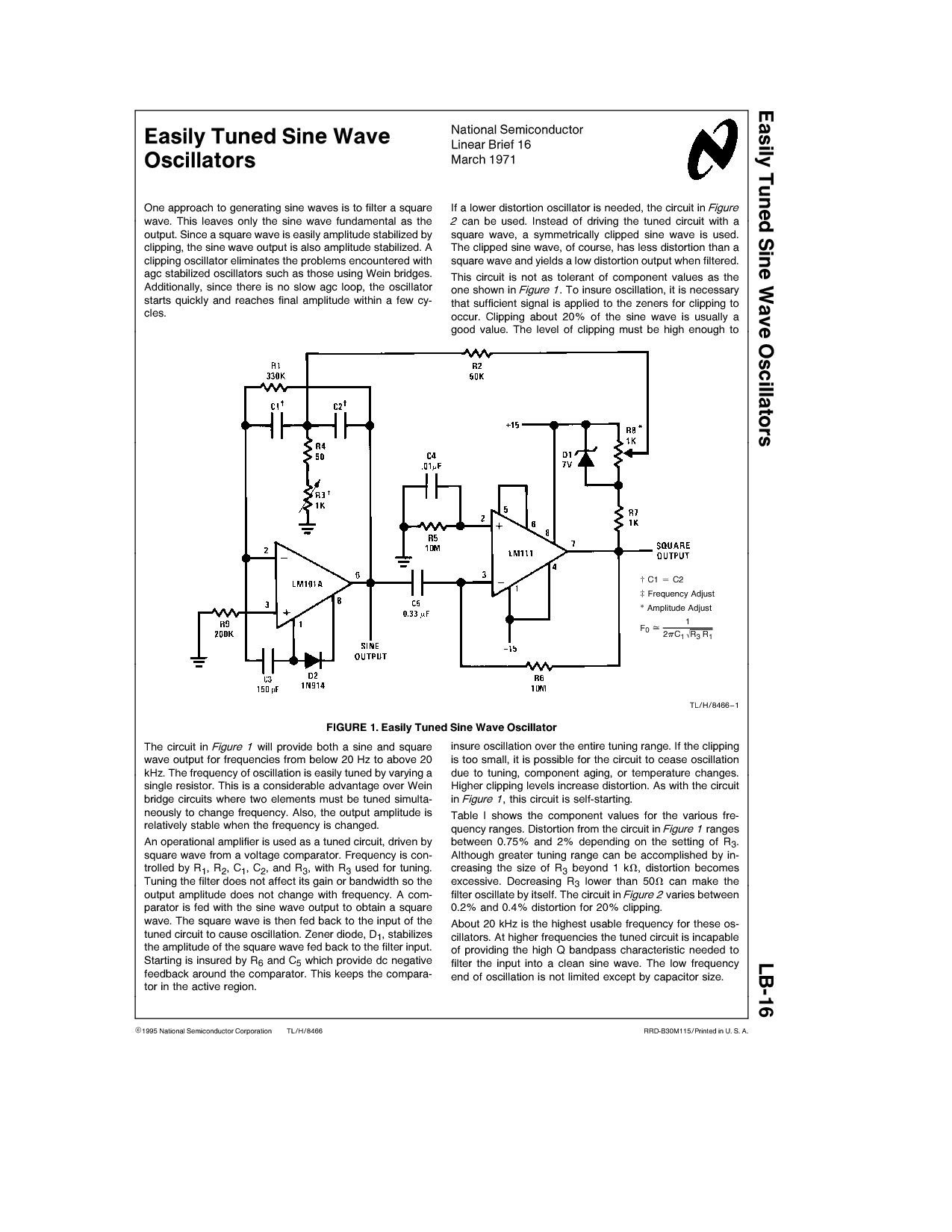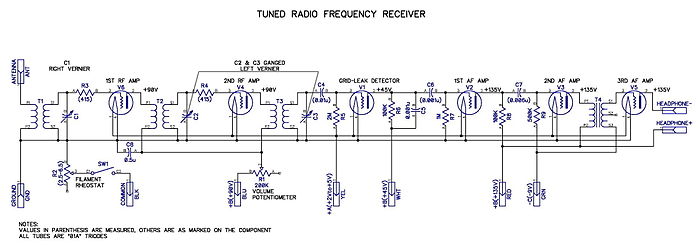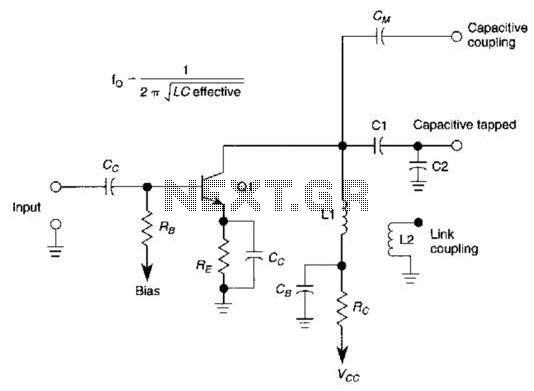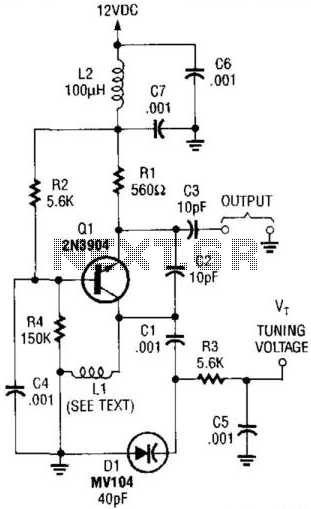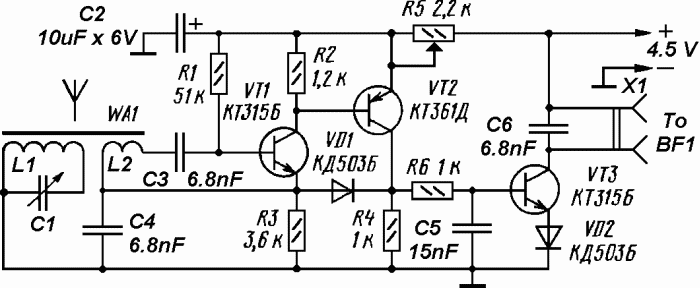
Tuned Rf Wavemeter
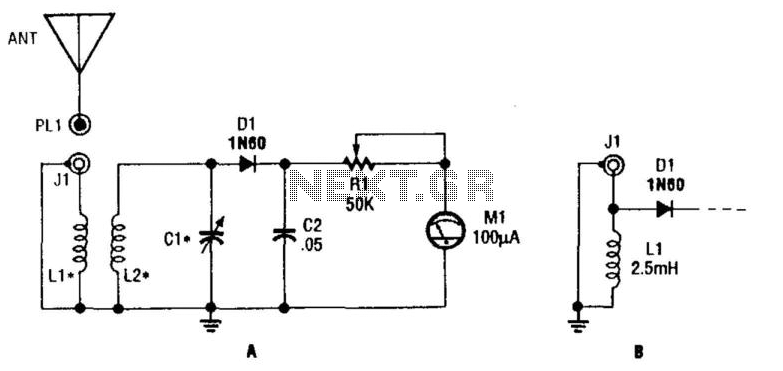
L1 and L2 form a tuned transformer with an optimum turns ratio of approximately 1:3. L2 and C1 are used to tune to the desired frequency. The frequency range can extend from 10 kHz to over 200 MHz, depending on the value of C1. For high-frequency (HF) applications, C1 can be a 140-pF variable capacitor, while for very high frequency (VHF) applications, a value of around 25 pF is recommended. The inclusion of a 2.5 RF choke will result in an untuned wavemeter.
The circuit utilizes two inductors, L1 and L2, configured as a tuned transformer. The design aims for an optimal turns ratio of approximately 1:3, which facilitates effective energy transfer between the two inductors while allowing for impedance matching to the load. The tuning element, C1, is critical in determining the operational frequency of the circuit.
The frequency range supported by this configuration spans from 10 kHz to over 200 MHz. This wide range is achievable by adjusting the capacitance value of C1. For HF applications, a variable capacitor with a capacitance of 140 pF is appropriate, allowing fine-tuning of the circuit to achieve resonance at lower frequencies. In contrast, for VHF applications, a lower capacitance value of around 25 pF is recommended to accommodate the higher frequency range.
In addition to the tuned transformer configuration, the use of a 2.5 RF choke introduces an alternative functionality. This component can create an untuned wavemeter setup, which may be beneficial for specific applications where frequency measurement or monitoring is required without the need for precise tuning. The RF choke serves to block certain frequencies while allowing others to pass, thus providing a means to analyze the frequency response of the circuit.
Overall, this circuit design offers versatility in tuning and frequency management, making it suitable for a variety of RF applications. The careful selection of inductance and capacitance values is essential in achieving the desired performance characteristics. Ll and L2 form a tuned transformer. About a 1:3 turns ratio is optimum. L2 and CI tune to the desired frequency. The fre quency range can be 10 kHz to over 200 MHz, depending on the value of CI. For HF use, CI can be a 140-pF variable. For VHF, use about 25 pF. Use of a 2.5 RF choke will yield an untuned wavemeter. 🔗 External reference
The circuit utilizes two inductors, L1 and L2, configured as a tuned transformer. The design aims for an optimal turns ratio of approximately 1:3, which facilitates effective energy transfer between the two inductors while allowing for impedance matching to the load. The tuning element, C1, is critical in determining the operational frequency of the circuit.
The frequency range supported by this configuration spans from 10 kHz to over 200 MHz. This wide range is achievable by adjusting the capacitance value of C1. For HF applications, a variable capacitor with a capacitance of 140 pF is appropriate, allowing fine-tuning of the circuit to achieve resonance at lower frequencies. In contrast, for VHF applications, a lower capacitance value of around 25 pF is recommended to accommodate the higher frequency range.
In addition to the tuned transformer configuration, the use of a 2.5 RF choke introduces an alternative functionality. This component can create an untuned wavemeter setup, which may be beneficial for specific applications where frequency measurement or monitoring is required without the need for precise tuning. The RF choke serves to block certain frequencies while allowing others to pass, thus providing a means to analyze the frequency response of the circuit.
Overall, this circuit design offers versatility in tuning and frequency management, making it suitable for a variety of RF applications. The careful selection of inductance and capacitance values is essential in achieving the desired performance characteristics. Ll and L2 form a tuned transformer. About a 1:3 turns ratio is optimum. L2 and CI tune to the desired frequency. The fre quency range can be 10 kHz to over 200 MHz, depending on the value of CI. For HF use, CI can be a 140-pF variable. For VHF, use about 25 pF. Use of a 2.5 RF choke will yield an untuned wavemeter. 🔗 External reference

